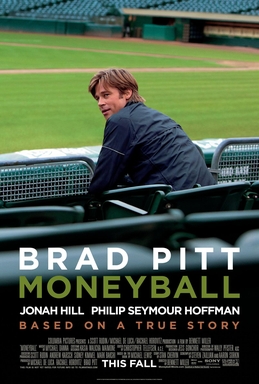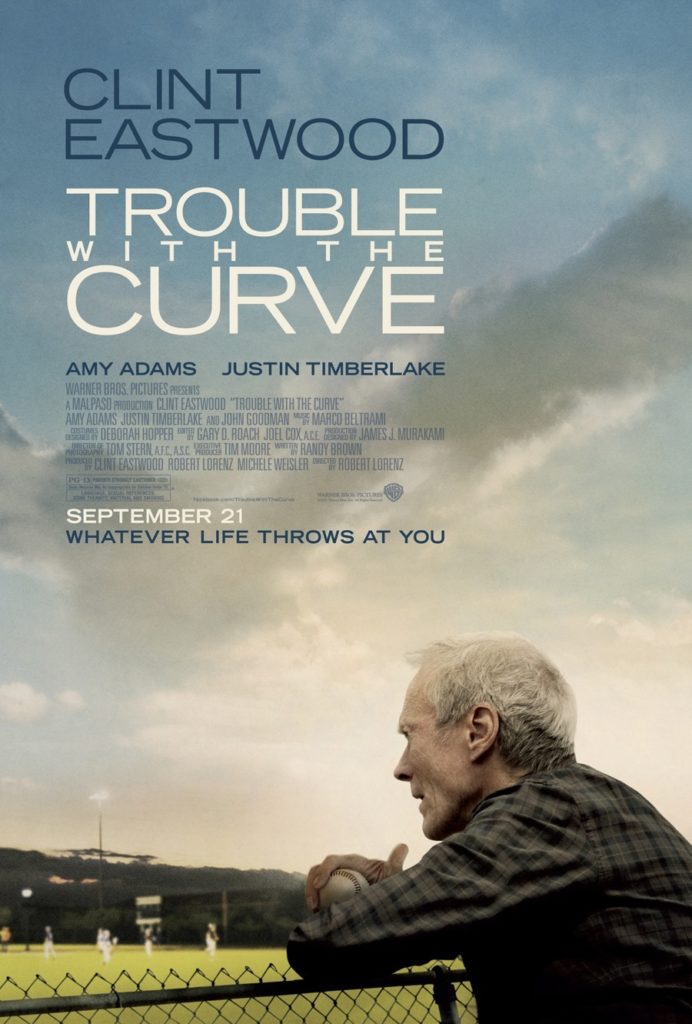Baseball Analytics vs. Traditional Scouting
Baseball is a beloved sport steeped in tradition and the beloved baseball analytics movie, “Moneyball,” reflects this passion. Another film, “Trouble with the Curve,” is critical of the use of analytics in baseball. These baseball analytics movies take opposing views on one of the most hotly debated topics in modern baseball – the use of analytics. And we’ll examine each below:
The Moneyball Approach: Embracing Sabermetrics
“Moneyball”, is a baseball analytics movie based on true events, tells the story of Billy Beane (Brad Pitt), the general manager of the Oakland Athletics, who employs statistical analysis, known as sabermetrics, to overcome budgetary constraints and build a competitive baseball team. This approach was a radical departure from traditional scouting methods that relied heavily on human judgement.
Moneyball (2011)
The film is based on the 2003 nonfiction book, “Moneyball: The Art of Winning an Unfair Game“, by Michael Lewis
Trouble with the Curve: Trusting in Tradition
On the other side of the spectrum, we have “Trouble with the Curve”, which extols the virtues of traditional, intuition-based scouting methods. Clint Eastwood portrays Gus, an aging baseball scout losing his sight but still relying on his instincts, with Amy Adams playing his daughter, Mickey, who shares her father’s intuitive approach.
Trouble with the Curve (2012)
The film revolves around an aging baseball scout whose daughter joins him on a scouting trip.
Baseball Statistics vs. Intuition
One key scene that underscores the divide between these two methodologies occurs in “Trouble with the Curve”. Here, Mickey impressively predicts the quality of a pitcher by hearing the sound of his fastball hit the catchers mitt – a feat no amount of statistical data can replicate. She connects with the heart and soul of the game, demonstrating that certain elements of baseball defy quantification.
Conversely, “Moneyball” presents a compelling argument for data-driven decisions. In one memorable scene, Beane confronts an old-school scout who can’t understand why the Athletics are interested in a player who “can’t hit”. Beane, armed with data about the player’s on-base percentage, challenges traditional thinking by focusing on the numbers rather than subjective observations.
Another riveting scene in “Moneyball” involves Beane recruiting an economics graduate from Yale, Peter Brand (Jonah Hill), who hasn’t played baseball professionally. Brand, with his deep understanding of statistics, becomes a vital asset to the Athletics, despite his lack of traditional baseball experience. This further underscores the film’s endorsement of analytics.
“Trouble with the Curve” counters this with the character of a young GM who relies solely on statistics and his #1 draft pick can’t hit a curveball when challenged to. This underlines the movie’s message that experience and intuition, aspects that are unquantifiable, still have a significant role in the evaluation of talent in the sport.
The Ongoing Debate
“Moneyball” and “Trouble with the Curve”, two acclaimed films about baseball, offer contrasting perspectives on the analytics vs. intuition debate. “Moneyball” advocates for the use of statistics and data in forming a competitive team, whereas “Trouble with the Curve” champions the merits of traditional, intuition-based scouting methods. Both films provide valuable insights, reflecting the ongoing debate in the real world of baseball, reminding us that while numbers are important, they may not capture the whole picture. In the end, the balance of analytics and tradition might just be the winning formula.

